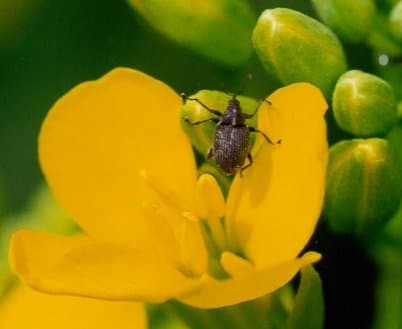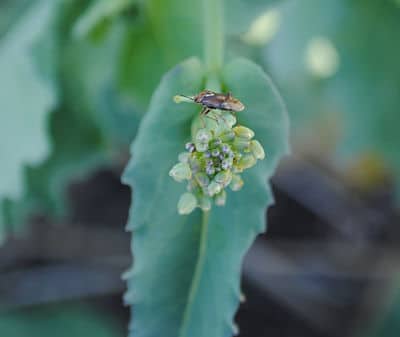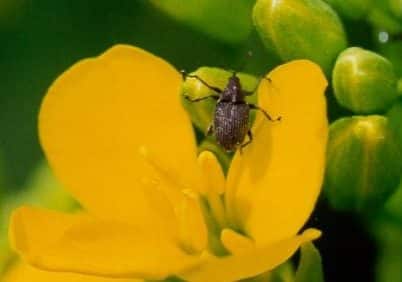

Many canola fields have a combination of insects feeding on the crop. An “additive” effect is possible when more than one species are feeding on key yield-producing areas — flowers, buds or pods — at the same time. For example, lygus and cabbage seedpod weevil have been found in the same fields in the southern Prairies this week. Preliminary results from an AAFC study suggests some basis for recommending control when you have moderate levels of the two pests. A nominal threshold of 15 weevils per 10 sweeps and 15 lygus per 10 sweeps has been suggested when both are present and feeding. (The threshold for cabbage seedpod weevil alone at early flowering is 20 per 10 sweeps.)
However, this combination threshold is probably best applied later in the season when lygus damage is more likely to cause economic loss. Lygus feeding now — at the bud and flower stages — rarely causes an economic loss unless counts are very high, say 50+ per 10 sweeps, and they prevent canola from flowering. Typically, lygus counts at bud and early flowering are less than 10 per 10 sweeps.
Note that some evidence exists that a small amount of early lygus feeding can actually increase yields.
Lygus in fields at early bloom are coming into fields continuously to lay eggs. These eggs are protected inside the plant until they hatch at the end of flowering and early pod stages, which is when the crop is most vulnerable to lygus feeding.
Another good reason NOT to spray lygus at early flower is that the weather may take care of the problem for you. Heavy showers at late flowering are highly damaging to lygus nymphs, and can do a lot to reduce the lygus problem.

